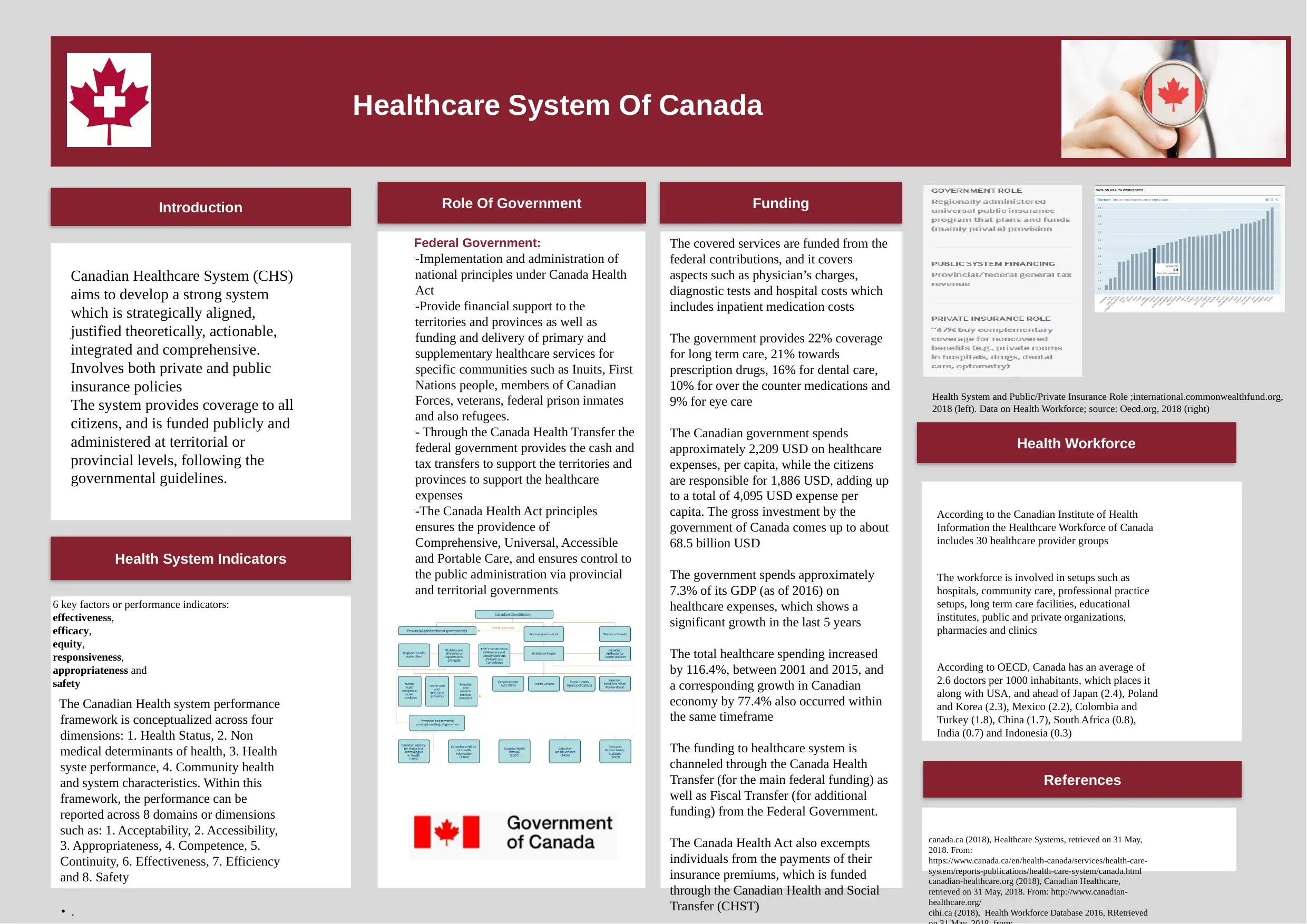PUBH2000: Analysis of Healthcare Systems, Government & Funding
VerifiedAdded on 2023/06/11
|1
|733
|321
Report
AI Summary
This report provides a comprehensive analysis of the Canadian healthcare system (CHS), focusing on the roles of government, funding mechanisms, health system performance indicators, and the healthcare workforce. It highlights the federal government's role in implementing national principles under the Canada Health Act, providing financial support to provinces and territories, and delivering healthcare services to specific communities. The report also examines key performance indicators such as effectiveness, efficiency, equity, and safety, as well as the dimensions of health status, non-medical determinants of health, health system performance, and community health. Furthermore, it discusses healthcare funding sources, including federal contributions and citizen responsibilities, and analyzes the composition of the Canadian healthcare workforce, comparing it to other countries. The analysis includes references to the Canada Health Act, Canadian Institute for Health Information, and OECD data, providing a detailed overview of the Canadian healthcare landscape. Desklib provides access to this and other solved assignments for students.







![[object Object]](/_next/static/media/star-bottom.7253800d.svg)